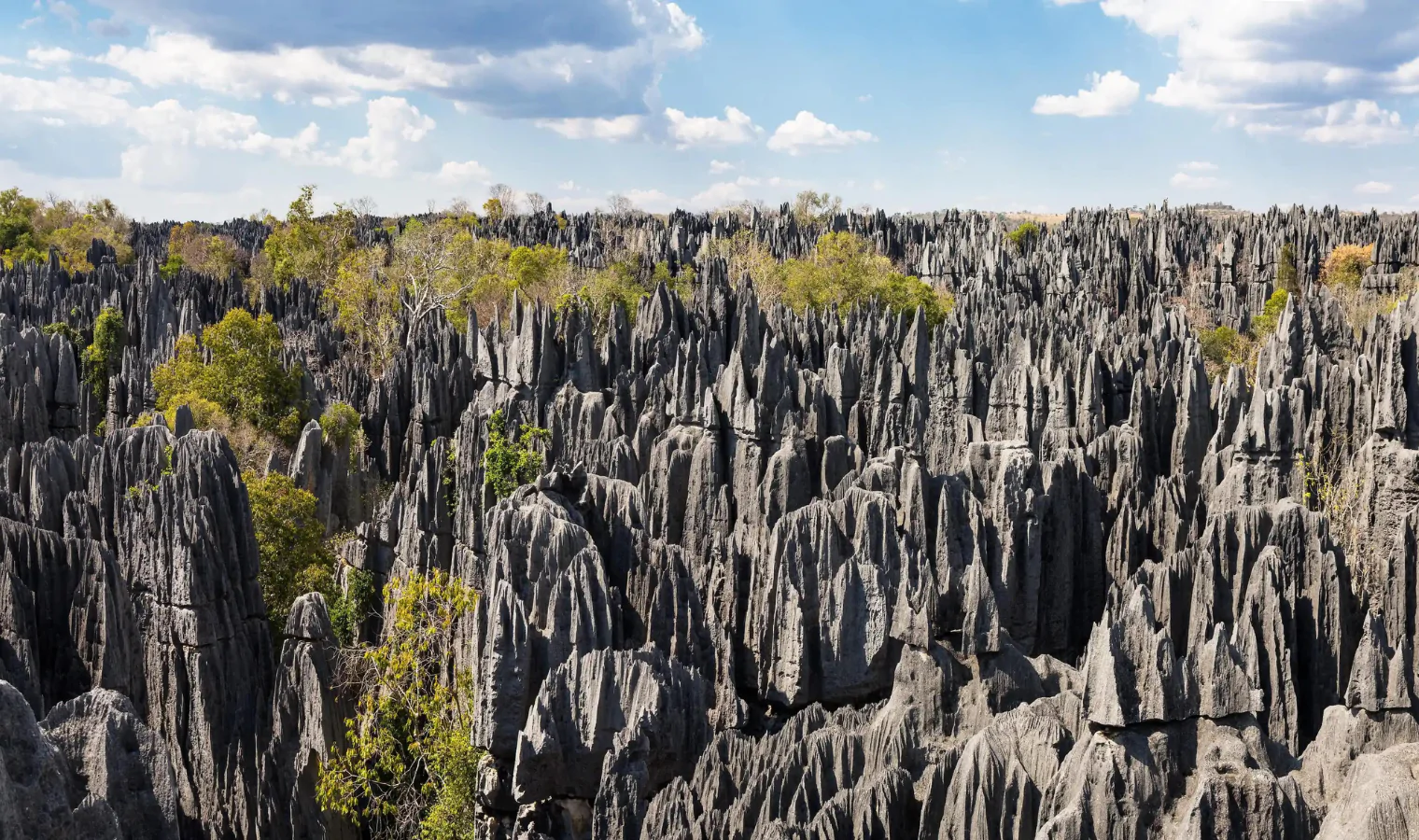Madagascar, an island off Africa’s southeast coast, is well-known for its unique biodiversity and breathtaking landscapes. Among its natural wonders, the Tsingy formations are one of the most intriguing and mysterious. In this article, we’ll look at the geological origins of Madagascar’s Tsingy, the incredible flora and fauna that live there, and their significance to science and exploration.
What mysteries exist within the Tsingy OF Madagascar?
Before delving into the geological and ecological wonders of the Tsingy, it’s critical to understand what these formations entail. The Malagasy term “Tsingy” translates as “where you can’t walk barefoot”. This vivid description perfectly captures the rugged, sharp limestone pinnacles and deep crevasses that define the Tsingy landscape. These otherworldly formations, which cover vast areas of north-west Madagascar, invite both adventurers and scientists to explore their labyrinthine depths.
How was the Tsingy OF Madagascar formed geologically?
The Tsingy originated millions of years ago, during the Late Jurassic and Early Cretaceous periods, when Madagascar was submerged in the sea. Over eons, the island’s gradual uplift, combined with the erosive forces of wind, rain, and subterranean watercourses, sculpted the limestone bedrock into the complex maze of karst formations we see today. The initial dissolution of limestone by acidic rainwater resulted in a porous landscape dotted with caves, sinkholes, and underground rivers. However, it was the relentless erosive power of water, combined with mechanical weathering caused by plant roots and animal activity, that shaped the Tsingy into its current bizarre form. Each jagged pinnacle and twisting canyon tells a story of geological transformation, a testament to the enduring forces of nature.
What unique flora and fauna can be found in the Tsingy?
Despite the Tsingy’s harsh and seemingly inhospitable environment, life thrives within its labyrinthine walls. The unique microclimates created by the interplay of sun and shade in the rock formations provide habitat for a diverse range of endemic species. Lemurs, Madagascar’s charismatic primates, are among the most iconic inhabitants, navigating the vertical cliffs with incredible agility. Decken’s sifaka and the red-fronted brown lemur seek refuge in treetops, whereas the elusive aye-aye hunts insects in crevices and caves. Reptiles like the leaf-tailed gecko and jewel chameleon blend in perfectly with the limestone backdrop, while birds like the Madagascar fish eagle and vasa parrot soar in the air. Meanwhile, a wide variety of plants, including the iconic baobab and spiny octopus, cling tenaciously to the bedrock, their roots burrowing deeply into the cracks in search of food.
The Tsingy of Madagascar invite adventurers and scientists alike to solve their mysteries. What stories do these ancient formations tell, and what lessons can we glean from their timeless beauty and ecological significance? As we continue to explore and conserve these natural wonders, let us also protect the Tsingy for future generations to marvel at and cherish.

